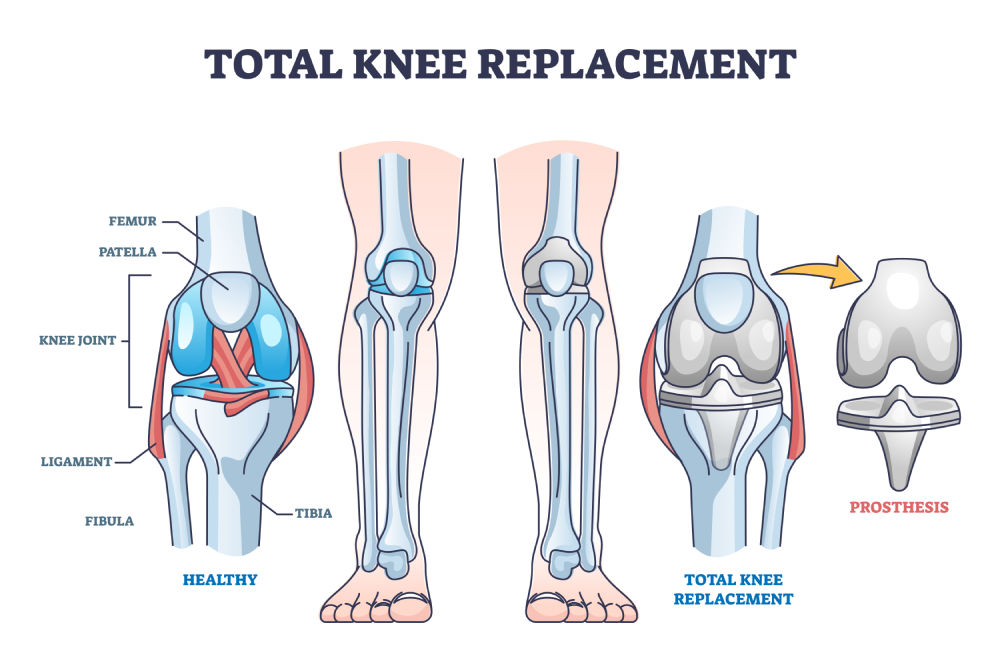Knee Joint Replacement
Knee joint replacement is surgery to replace a knee joint with a man-made joint. The artificial joint is called a prosthesis.
The most common reason to have a knee joint replaced is to relieve severe arthritis pain. Your doctor may recommend knee joint replacement if:
- You're having pain for knee arthritis that keeps you from sleeping or doing normal activities
- You can't walk and take care of yourself
- Your knee pain has not improved with other treatment
- You understand what surgery and recovery will be like
- Most of the time, knee joint replacement is done in people ages 60 and older. Younger people who have a knee joint replaced may put extra stress on the artificial knee and cause it to wear out early
Knee Joint Description
Damaged cartilage and bone are removed from the knee joint. Man-made pieces are then placed in the knee.
These pieces may be placed in the following places in the knee joint:
- Lower end of the thigh bone. This bone is called the femur. The replacement part is usually made of metal.
- Upper end of the shin bone, which is the large bone in your lower leg. This bone is called the tibia. The replacement part is usually made from metal and a strong plastic.
- Back side of your kneecap. Your kneecap is called the patella. The replacement part is usually made from a strong plastic.

Knee Joint Replacement: Procedure
After you receive anesthesia, your surgeon will make a cut over your knee to open it up. This cut is often 8 to 10 inches long.
Your surgeon will then:
- Move your kneecap (patella) out of the way, then cut the ends of your thigh bone and shin (lower leg) bone to fit the replacement part
- Cut the underside of your kneecap to prepare it for the new pieces that will be attached there
- Fasten the two parts of the prosthesis to your bones. One part will be attached to the end of your thigh bone and the other part will be attached to your shin bone
- Attach both parts to the underside of your kneecap. A special bone cement is used to attach these parts
- Repair your muscles and tendons around the new joint and close the surgical cut
Most artificial knees have both metal and plastic parts. Some surgeons now use different materials, including metal on metal, ceramic on ceramic, or ceramic on plastic.
Knee Joint Replacement: After the Procedure
You will recover from anesthesia, we will ensure your pain is controlled and you will be up with assistance walking the day of surgery. Therapy will evaluate you for a safe discharge plan.
Many people are able to discharge to home on day of surgery. If therapy or a care team member identifies any needs to assist you in safely transitioning to home, a TriHealth Care Manager will be available to coordinate any needed services. These can include walkers, or other assistive equipment, and home care services.
Joint Replacement Class 513 865 1340
Joint Replacement Class 513 862 2775
